Landnutzung und Biodiversität
Die menschliche Landnutzung ist einer der Hauptgründe für den Verlust an biologischer Vielfalt oder Biodiversität. Dies wird durch zahlreiche Studien belegt. In unserer Forschung konzentrieren wir uns auf drei zentrale Fragen:
- Was sind die wichtigsten Faktoren der Landnutzung, die zu Veränderungen der Biodiversität führen, d. h. welche Komponenten der menschlichen Landnutzung sind schädlich für Arten, positiv für Arten und welche haben nur geringe Auswirkungen?
- Wie wirkt sich die Landnutzung in Wechselwirkung mit dem Klima auf die Arten aus? Es ist bekannt, dass das Klima viele Arten, insbesondere Insekten, beeinflusst. Die offene Frage ist, wie der Klima-Effekt mit der Landnutzung zusammenwirkt und beispielsweise zu einem Rückgang von Insektenpopulationen führt.
- Wie können wir die Landnutzung so anpassen, dass sie weniger negative Auswirkungen auf Arten hat? Unsere Ergebnisse sollen helfen, wissenschaftsbasierte nachhaltige Landnutzungssysteme zu entwickeln.
Wir untersuchen die menschliche Landnutzung in landwirtschaftlichen Systemen, im Grünland und im Acker, in Wäldern und in der Stadt (siehe Forschungsthema Stadtökologie). In unserer Forschung quantifizieren wir die Artenvielfalt von Tieren im Feld, insbesondere von Insekten, Vögeln und anderen Organismen und verknüpfen die Biodiversitätsdaten mit Variablen, die die Landnutzung in dem untersuchten System beschreiben. Zur Identifizierung der Arten verwenden wir sowohl klassische Methoden als auch moderne Verfahren (Audioaufnahmen von Vögeln, Metabarcoding von Insekten, KI-Identifizierung von Insektenbildern). Wir führen zudem Experimente durchführen, in denen die Landnutzung entweder von uns oder von den Bewirtschaftern verändert wird, um die Rolle der Biodiversitätstreiber mechanistisch zu verstehen.
Unsere Forschungsfragen werden in einer Reihe von Projekten untersucht:
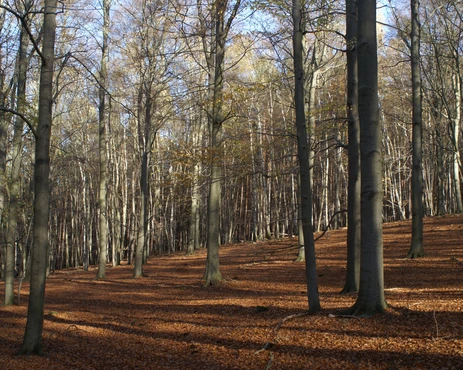
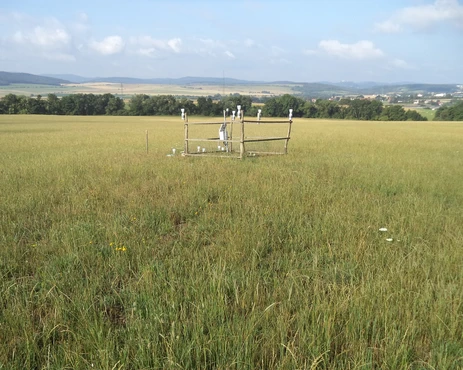
Biodiversitäts-Exploratorien
Die Biodiversitäts-Exploratorien sind ein langfristiges Schwerpunktprogramm, das von der Deutschen Forschungsgemeinschaft (DFG) gefördert wird. Das Projekt konzentriert sich auf Landnutzung, Biodiversität und Ökosystemfunktionen in Grünland und Wäldern. Zwischen 35 und 45 Forschungsgruppen aus ganz Deutschland nutzen diese Plattform für Biodiversitätsforschung. Wir sind seit Beginn an diesem Projekt beteiligt1. Link zur offiziellen Homepage.
In drei Regionen Deutschlands, der Schwäbischen Alb, Schorfheide-Chorin und im Hainich wurden jeweils 100 Versuchsflächen eingerichtet. Unsere Arbeitsgruppe koordiniert die Forschung auf den 100 Versuchsflächen des Hainich-Exploratoriums. Unser lokales Managementteam (LMT) hat seinen Sitz in Mülverstedt in Thüringen und fungiert als Schnittstelle zwischen den Wissenschaftlern, lokalen Interessengruppen und Landbesitzern.
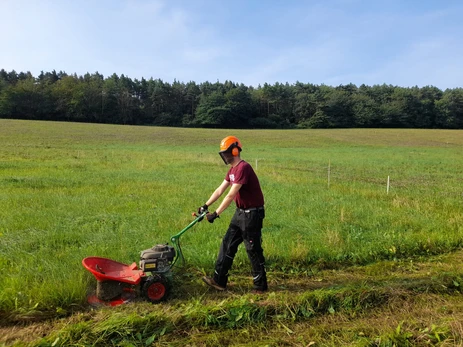
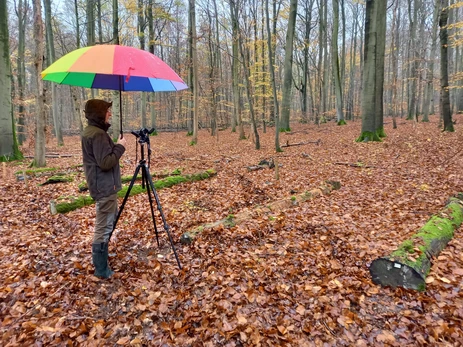
Seit 2008 untersuchen wir die Arthropoden auf allen 300 Grünland- und Waldflächen der Biodiversitätsexploratorien. Arthropoden tragen wesentlich zur Erhaltung terrestrischer Ökosysteme bei und erbringen eine Vielzahl von Ökosystemleistungen. Wir haben einen Rückgang der Arthropoden im Zusammenhang mit der Landnutzung2 in der Umgebung sowie Treiber für Veränderungen in Wäldern3 festgestellt. Der langfristige Charakter dieser weltweit einzigartigen Zeitreihe ermöglicht es nun auch, die relative Rolle von Wetter- und Landnutz ungsänderungen in der Arthropodengemeinschaft zu entwirren. Weitere Informationen finden Sie auf der separaten Seite zur Arthropoden-Zeitreihe.
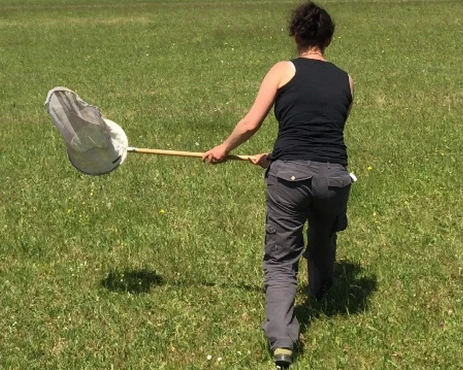
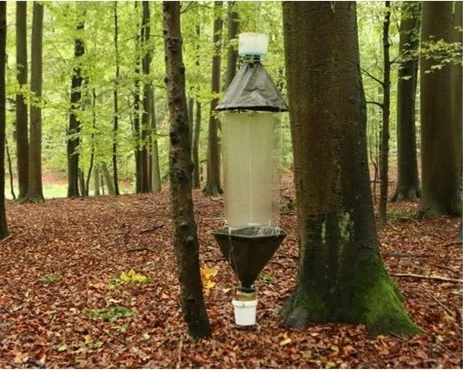
Im Rahmen der Biodiversitäts-Exploratorien entwickeln wir Methoden zur KI-gestützten Identifizierung von Insekten. In dem Projekt AIforIBM (Artificial Intelligence for automated Insect Biodiversity Monitoring) arbeiten wir mit der Technischen Universität Ilmenau zusammen (die auch Flora Incognita entwickelt hat) , um eine KI zur Identifizierung von Insekten zu trainieren.
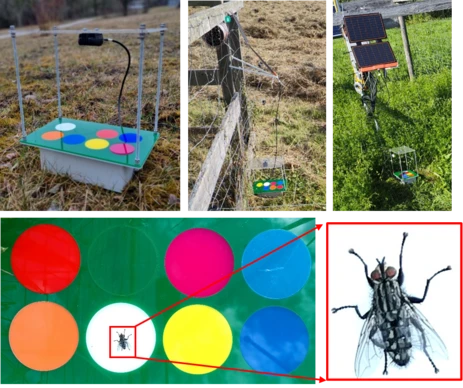
Unsere Gruppe ist auch für die Koordination des BELongDead-Experiments verantwortlich, das in den 30 „VIP“-Parzellen (Very Intensive Plots) in den drei Biodiversitäts-Exploratorien durchgeführt wird. Auf Initiative von Ernst-Detlef Schulze vom Max-Planck-Institut für Biogeochemie in Jena wurden 2010 Baumstämme (Durchmesser 30–40 cm, Länge 4 m) von 13 verschiedenen Baumarten in dreifacher Ausfertigung in jeder der Parzellen ausgelegt. Seitdem untersuchen wir die Besiedlung dieser Baumstämme durch Insekten mithilfe von Emergenzfallen. Andere Gruppen des BELongDead-Konsortiums untersuchen Pilze, Milben, und andere Organismen, die an den Stämmen leben oder die Zersetzung von Baumstämmen, z. B. den DOC-Fluss. Das einzigartige Experiment ermöglicht es, den Einfluss der Baumarten vom Einfluss des umgebenden Waldes auf die Gestaltung der Gemeinschaften, die Totholz nutzen, und auch auf die Zersetzung des Holzes zu trennen. Wichtige Ergebnisse betreffen die Analyse artspezifischer Unterschiede im Verfall der Baumstämme im Laufe der Zeit4 und die Entwicklung der Insektengemeinschaften im Laufe der Zeit5.
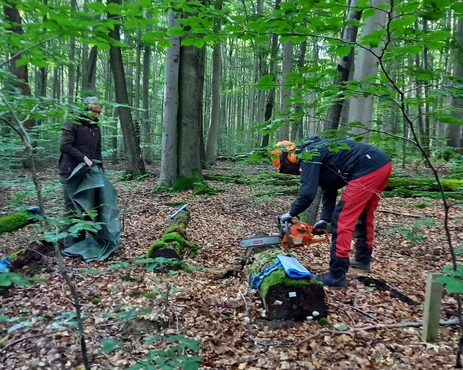
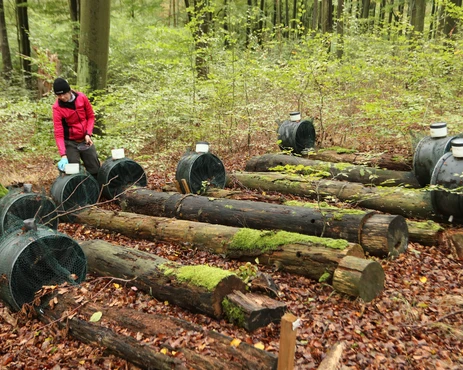
Douglasie und die Biodiversität von Buchenwäldern
Die Wälder Deutschlands stehen aufgrund der durch Dürre verursachten Baumsterblichkeit vor beispiellosen Herausforderungen, was die dringende Notwendigkeit adaptiver Forstwirtschaftspraktiken angesichts des Klimawandels unterstreicht. Im Projekt „Zukunftspotenzial von Douglasie- und Weißtannenmischbeständen” (TUM, Universität Göttingen, mit Unterstützung des Bayerischen Landesamtes für Forstwirtschaft (LWF)) untersuchen wir die ökologischen Auswirkungen der Einbeziehung von Douglasie und Weißtanne in Buchenwälder.
Unser primäres Ziel ist es, die Auswirkungen dieser Mischbestände auf die einheimische Biodiversität zu verstehen, wobei wir uns insbesondere auf die taxonomische und funktionelle Vielfalt innerhalb der Gemeinschaften von Vögeln, Fledermäusen und Insekten konzentrieren. In einer Übersicht haben wir festgestellt, dass frühere Studien nur geringe Auswirkungen der Einführung von Douglasie auf die Biodiversität festgestellt haben, dass aber auch die Anzahl der Studien sehr begrenzt ist6. Wir haben 2023 ingesamt 63 Parzellen (30 Douglasie-Buche, 23 Weißtanne-Buche und 10 Buche-Parzellen als Kontrolle) in Unterfranken (Spessart) eingerichtet, die als Versuchsflächen dienen. Die Mischparzellen repräsentieren einen Gradienten des Nadelbaumanteils innerhalb der Buchenbestände. Wir verwenden Malaise- und Lichtfallen, um die Biomasse und den Artenreichtum von Arthropoden und nachtaktiven Motten zu messen, und setzen Audiorecorder ein, um Vögel und Fledermäuse zu überwachen. Darüber hinaus überwachen wir den Fortpflanzungserfolg von Vögeln mithilfe von Nistkästen.
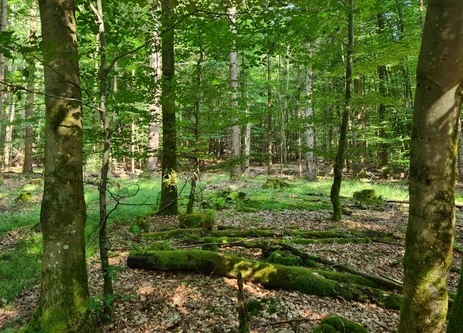
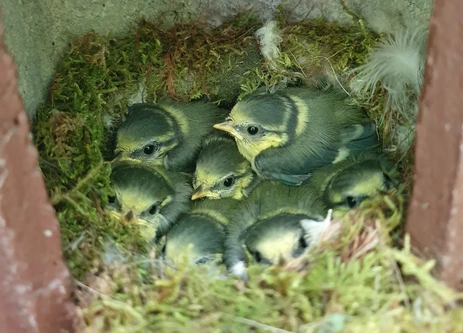
Abgeschlossene Projekte:
In den vergangenen Jahren haben wir eine ganze Reihe von Landnutzungs-Projekten durchgeführt, viele davon fanden im Wald statt.
Ausbrüche von Schwammspinnerraupen und Waldbiodiversität (abgeschlossen 2023)
Der Schwammspinner ist ein Nachtfalter, der sich wie einige andere Schmetterlinge in unregelmäßigen Abständen sehr stark vermehrt und in einem solchen Massenausbruch (Gradation) ganze Waldbestände kahlfressen kann. Ein Schwammspinnerausbruch wird häufig mithilfe eines Einsatz von Insektiziden eingedämmt, die mit Hubschraubern in betroffenen Waldbeständen ausgebracht werden. Das Für und Wider solcher Bekämpfungen wird in der Öffentlichkeit stark diskutiert. Einerseits kann eine hohe Dichte an Schwammspinnerraupen zur Entlaubung von Eichen und anderen Baumarten führen. Dies soll durch rechtzeitige Bekämpfungsmaßnahmen verhindert werden, um Waldbesitzer vor Schäden und sogar der Zerstörung ihrer Bestände zu schützen. Andererseits sind Eichenmischwälder sehr artenreich und beherbergen eine Vielzahl gefährdeter Schmetterlinge, Motten, Vögel und anderer Arten, sodass die Sorge besteht, dass diese kurz- oder langfristig unter dem Einsatz von Insektiziden leiden könnten. Allerdings hat der Befall durch Schwammspinner auch negative Folgen für andere Arten in einem Eichenwald, da die Artengemeinschaft für einige Zeit von einer einzigen Art, dem Schädling, dominiert wird. Während die Biologie der Schwammspinnerraupe gut bekannt ist und es bereits viele gute Studien zu den Auswirkungen der Entlaubung auf Eichen gibt, bestehen weitere Wissenslücken, die für das Risikomanagement wichtig sind, z. B. hinsichtlich der kurz- und langfristigen Auswirkungen der Schwammspinnerraupe auf das Eichenwachstum in Abhängigkeit vom Standort. Die Wechselwirkungen zwischen der Dichte der Schwammspinner, den Standortbedingungen, dem gewählten Bewirtschaftungsansatz und den Reaktionen der Eichenwälder und ihrer Gemeinschaften können nur in Jahren mit Massenvermehrung untersucht werden.
Ein großer Erfolg des Projekts war die Durchführung eines einzigartigen Experiments mit der experimentellen Besprühung von Waldbeständen per Hubschrauber, um die Auswirkungen der Schwammspinnerdichte und des Einsatzes von Insektiziden zu untrennen6. Ein wichtiges Ergebnis des Projekts ist, dass zwar sowohl der Einsatz von Insektiziden als auch der Befall durch die Schwammspinnerraupe erhebliche Nebenwirkungen auf andere Insekten haben, diese Auswirkungen jedoch nach 1–2 Jahren mehr oder weniger verschwanden. Ebenso beeinträchtigte der Befall durch die Schwammspinnerraupe das Wachstum der Eichen, aber auch diese Auswirkungen ließen nach 1–2 Jahren nach, und die Baumsterblichkeit war bislang nicht signifikant erhöht. Eine Schlussfolgerung aus dem Projekt lautet daher, dass es wahrscheinlich effektiver wäre, Waldbesitzer für das (seltene) Absterben von Bäumen zu entschädigen, als große Summen für die Besprühung von Wäldern mit Hubschraubern auszugeben. Siehe auch die Publikationen von Leroy et al. 2022 und 2023 für einige der Auswirkungen auf andere Insekten.
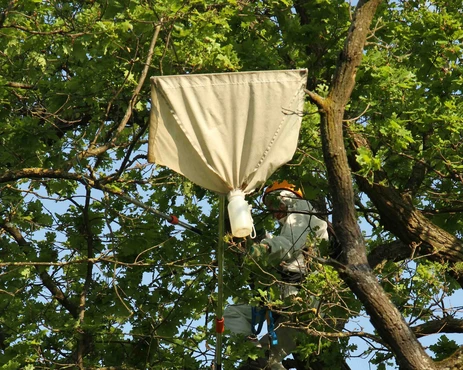
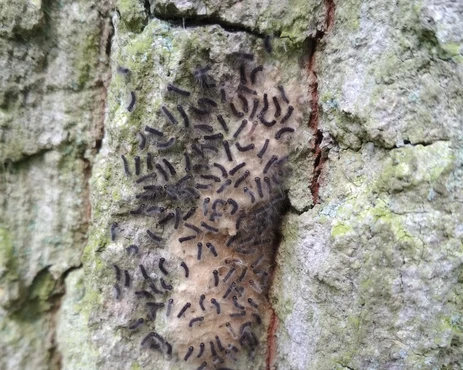
Biodiversität in gemischten Buchenwäldern (abgeschlossen 2021)
In der Vergangenheit wurden Studien zur Biodiversität in Wäldern hauptsächlich in unbewirtschafteten Wäldern durchgeführt. Der Großteil der Waldflächen in Deutschland wird jedoch für die Forstwirtschaft genutzt. Die integrative Forstwirtschaft zielt darauf ab, die Nutzung und den Schutz der Biodiversität zu koordinieren und so die Erhaltung der Artenvielfalt in der gesamten Waldfläche zu ermöglichen. Die integrative Waldbewirtschaftung umfasst Maßnahmen wie die Förderung von Biotopholzstrukturen in Form von Habitatbäumen und Totholz, die Ausweisung von Trittsteinflächen und die Erhaltung von Sonderstandorten mit besonderer Biodiversität. Das Projekt „Biodiversität in gemischten Buchenwäldern” trug dazu bei, wissenschaftliche Grundlagen für Entscheidungsprozesse zu schaffen, die sich im Rahmen der Waldbewirtschaftung auf die Biodiversität auswirken. Reine Buchenwälder wurden mit Beständen verglichen, in denen Buchen mit anderen Arten wie Fichten, Eichen oder anderen Baumarten gemischt waren. Darüber hinaus wurde die Rolle kleiner Schutzgebiete berücksichtigt. Eine wichtige Veröffentlichung des Doktoranden Jan Leidinger zeigte die Auswirkungen verschiedener Beimischungen auf die Biodiversität in den Wäldern10.
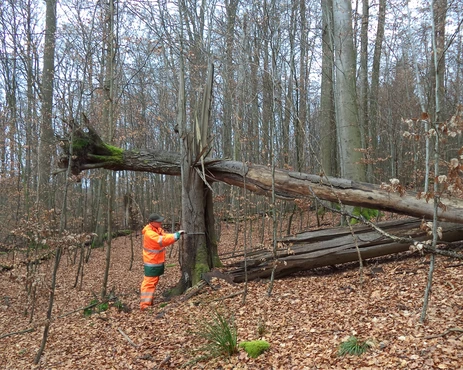
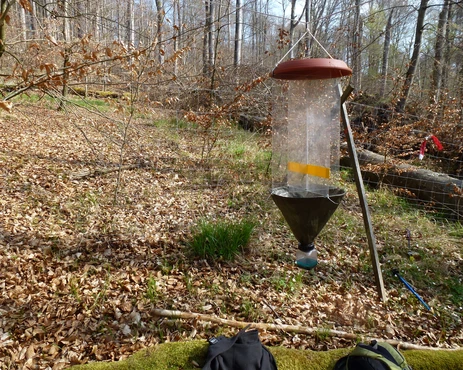
Brasilianische Graslandschaften (abgeschlossen 2016)
Landnutzungsänderungen wie die Umwandlung von naturnahen Graslandschaften in Landwirtschaft, Forstwirtschaft oder intensiv genutzte Weiden beeinträchtigen die Biodiversität und die Funktionen und Leistungen von Ökosystemen. Welche Ökosystemfunktionen jedoch bei der Umwandlung von hochdiversen Graslandschaften beeinträchtigt werden, ist weitgehend unbekannt. Als Modellsystem untersuchten wir 80 Graslandschaften in Rio Grande do Sul im Süden Brasiliens, darunter außergewöhnlich artenreiche Grünländer, die traditionell durch Abbrennen der angesammelten Biomasse und mäßige Beweidung bewirtschaftet werden, sowie vier weitere Graslandtypen mit unterschiedlicher aktueller oder historischer Bewirtschaftung: Dauergrünland mit reduzierter oder erhöhter aktueller Bewirtschaftungsintensität und Sekundärgrasland nach früherer land- oder forstwirtschaftlicher Nutzung. Wir haben zehn Ökosystemfunktionen gemessen, die alle wichtigen unter- und oberirdischen Ökosystemkomponenten und die sie verbindenden Prozesse abdecken, wobei wir den in unserer Gruppe entwickelten neuartigen Ansatz zur schnellen Bewertung von Ökosystemfunktionen verwendet haben. Siehe Leidinger et al. 201511.
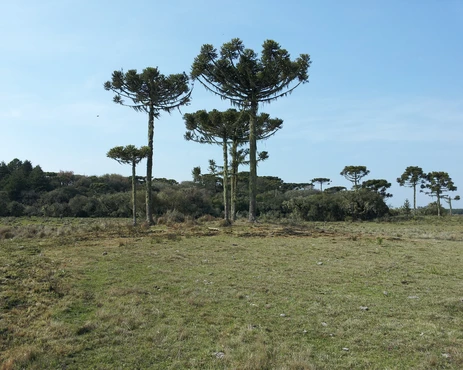
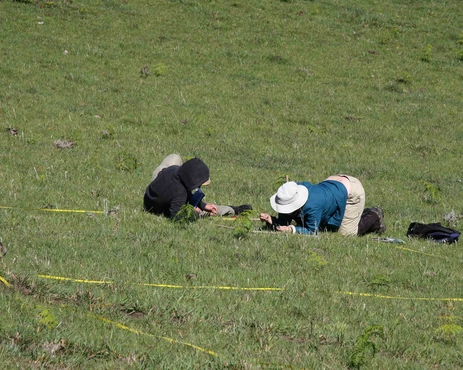
BIOLOG Diva-Jena (abgeschlossen 2009)
Das vom Bundesministerium für Bildung und Forschung (BMBF) zwischen 2000 und 2010 geförderte Verbundforschungsprojekt BIOLOG DIVA-Jena „Die Beziehung zwischen Biodiversität und Ökosystemfunktion in Graslandökosystemen” nutzte intensiv bewirtschaftete Graslandflächen in Thüringen und Bayern als Modellökosysteme, um die Beziehung zwischen Biodiversität und Ökosystemfunktion zu untersuchen. Anhand eines Gradienten der Pflanzenartenvielfalt kam das Projekt zu dem Ergebnis, dass auch in diesen naturnahen Ökosystemen ein Zusammenhang zwischen der Pflanzenartenvielfalt und Ökosystemvariablen besteht12.
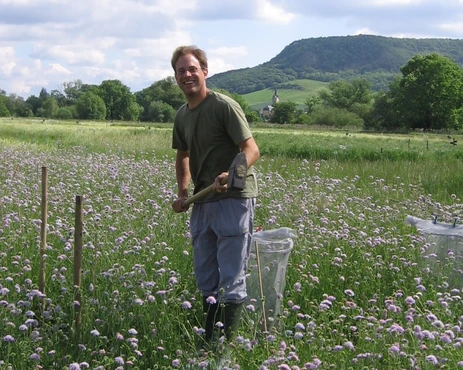
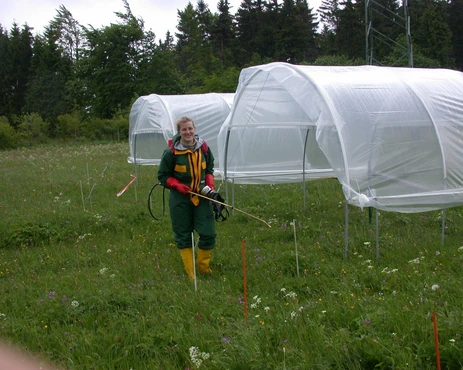
Agripopes (abgeschlossen 2010)
Die Bedeutung der Landnutzungsintensität für die Biodiversität und die Ökosystemfunktionen stand auch im Mittelpunkt des AGRIPOPES-Projekts, einem vom ESF finanzierten Netzwerk von 12 Forschungsteams aus ganz Europa. Anhand von Weizenfeldern als Modellökosystem analysierte das Projekt die Auswirkungen von Parametern der Landnutzungsintensivierung auf die Biodiversität und das biologische Kontrollpotenzial der Biodiversität. In einem einzigartigen Ansatz wurden mehr als 1300 Weizenfelder bewertet und Informationen über Landnutzung, Biodiversität und Ökosystemfunktionen zusammengetragen. In einer viel zitierten Veröffentlichung zeigte das Projekt, dass der Einsatz von Pflanzenschutzmitteln, insbesondere Insektiziden und Herbiziden, für den Rückgang der Biodiversität von Insekten, Pflanzen und Vögeln sowie für das biologische Bekämpfungspotenzial an den Standorten wichtiger war als andere Maßnahmen der Landnutzung13.

1Fischer, M., O. Bossdorf, S. Gockel, F. Hänsel, A. Hemp, D. Hessenmöller, G. Korte, J. Nieschulze, S. Pfeiffer, D. Prati, S. Renner, I. Schöning, U. Schumacher, K. Wells, F. Buscot, E. K. V. Kalko, K. E. Linsenmair, E.-D. Schulze, and W. W. Weisser. 2010. Implementing large-scale and long-term functional biodiversity research: The Biodiversity Exploratories. Basic and Applied Ecology 11:473-485.
2Seibold, S., M. M. Gossner, N. K. Simons, N. Blüthgen, J. Müller, D. Ambarlı, C. Ammer, J. Bauhus, M. Fischer, J. C. Habel, K. E. Linsenmair, T. Nauss, C. Penone, D. Prati, P. Schall, E.-D. Schulze, J. Vogt, S. Wöllauer, and W. W. Weisser. 2019. Arthropod decline in grasslands and forests is associated with landscape-level drivers. Nature 574:671-674.
3Staab, M., M. M. Gossner, N. K. Simons, R. Achury, D. Ambarlı, S. Bae, P. Schall, W. W. Weisser, and N. Blüthgen. 2023. Insect decline in forests depends on species’ traits and may be mitigated by management. Communications Biology 6.
4Edelmann, P., W. W. Weisser, D. Ambarli, C. Bässler, F. Buscot, M. Hofrichter, B. Hoppe, H. Kellner, C. Minnich, J. Moll, D. Persoh, S. Seibold, C. Seilwinder, E. D. Schulze, S. Wöllauer, and W. Borken. 2023. Regional variation in deadwood decay of 13 tree species: Effects of climate, soil and forest structure. Forest Ecology and Management 541.
5Seibold, S., W. W. Weisser, D. Ambarli, M. M. Gossner, A. S. Mori, M. W. Cadotte, J. Hagge, C. Bässler, and S. Thorn. 2023. Drivers of community assembly change during succession in wood-decomposing beetle communities. Journal of Animal Ecology 92:965-978.
6Leroy, B. M. L., H. Lemme, P. Braumiller, T. Hilmers, M. Jacobs, S. Hochrein, S. Kienlein, J. Müller, H. Pretzsch, K. Stimm, S. Seibold, J. Jaworek, W. A. Hahn, S. Müller‐Kroehling, and W. W. Weisser. 2021. Relative impacts of gypsy moth outbreaks and insecticide treatments on forest resources and ecosystems: An experimental approach. Ecological Solutions and Evidence 2.
7Graf, M., R. Achury, I. Lanzrein, R. Wenglein, P. Annighöfer, S. Scheu, and W. W. Weisser. 2025. The effect of Douglas-fir on biodiversity in European forests – What do we know and what do we not know? Forest Ecosystems 13:100319.
8Leroy, B. M. L., D. Rabl, M. Püls, S. Hochrein, S. Bae, J. Müller, P. D. N. Hebert, M. L. Kuzmina, E. V. Zakharov, H. Lemme, W. A. Hahn, T. Hilmers, M. Jacobs, S. Kienlein, H. Pretzsch, L. Heidrich, S. Seibold, N. Roth, S. Vogel, P. Kriegel, and W. W. Weisser. 2023. Trait-mediated responses of caterpillar communities to spongy moth outbreaks and subsequent tebufenozide treatments. Ecological Applications 33.
9Leroy, B. M. L., S. Seibold, J. Morinière, V. Bozicevic, J. Jaworek, N. Roth, S. Vogel, S. Zytynska, R. Petercord, P. Eichel, and W. W. Weisser. 2022. Metabarcoding of canopy arthropods reveals negative impacts of forestry insecticides on community structure across multiple taxa. Journal of Applied Ecology 59:997-1012.
10Leidinger, J., M. Blaschke, M. Ehrhardt, A. Fischer, M. M. Gossner, K. Jung, S. Kienlein, J. Kozak, B. Michler, R. Mosandl, S. Seibold, K. Wehner, and W. W. Weisser. 2021. Shifting tree species composition affects biodiversity of multiple taxa in Central European forests. Forest Ecology and Management 498:119552.
11Leidinger, J. L., M. M. Gossner, W. W. Weisser, C. Koch, Z. L. Rosadio Cayllahua, L. R. Podgaiski, M. M. Duarte, A. S. Araújo, G. E. Overbeck, J. M. Hermann, J. Kollmann, and S. T. Meyer. 2017. Historical and recent land use affects ecosystem functions in subtropical grasslands in Brazil. Ecosphere 8:e02032.
12Unsicker, S. B., A. Franzke, J. Specht, G. Kohler, J. Linz, C. Renker, C. Stein, and W. W. Weisser. 2010. Plant species richness in montane grasslands affects the fitness of a generalist grasshopper species. Ecology 91:1083-1091.
13Geiger, F., J. Bengtsson, F. Berendse, W. W. Weisser, M. Emmerson, M. B. Morales, P. Ceryngier, J. Liira, T. Tscharntke, C. Winqvist, S. Eggers, R. Bommarco, T. Pärt, V. Bretagnolle, M. Plantegenest, L. W. Clement, C. Dennis, C. Palmer, J. J. Oñate, I. Guerrero, V. Hawro, T. Aavik, C. Thies, A. Flohre, S. Hänke, C. Fischer, P. W. Goedhart, and P. Inchausti. 2010. Persistent negative effects of pesticides on biodiversity and biological control potential on European farmland. Basic and Applied Ecology 11:97-105.